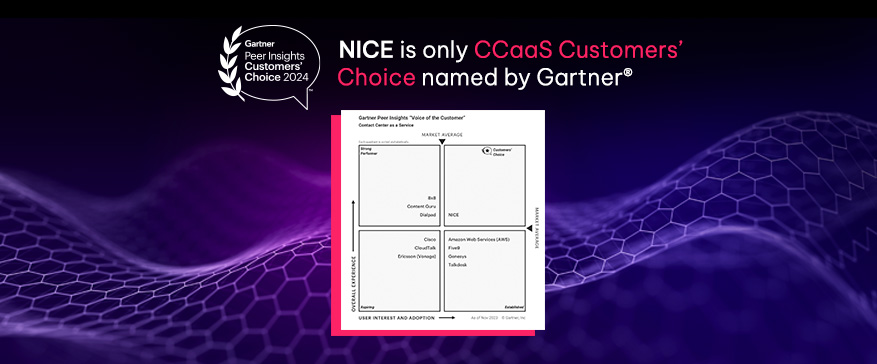AI, Automation, and Analytics: Prescription for Healthcare Success
- What is Workforce Management?
- Key Components of Cloud WEM
- Key Examples of Customer Service Automation Tools
- Benefits of Cloud WEM
- Challenges of Traditional Workforce Management Tools
- Choosing the Right Workforce Management Solution
- Use Cases for Cloud WEM
- Implementing Cloud WEM
- Measuring Success with Cloud WEM
- Challenges and Solutions in Cloud WEM Implementation
- Future Trends in Cloud WEM
- Conclusion
- FAQs
- According to a 2024 Deloitte report, 83% of organizations adopting cloud-based workforce solutions report higher employee engagement.
- A study by Gartner predicts that by 2026, 75% of large enterprises will use Cloud WEM solutions, up from 40% in 2023.
- McKinsey highlights that organizations implementing workforce engagement tools see a 20-30% improvement in productivity.
What is Workforce Management?
Workforce management (WFM) is a strategic approach to allocating people and resources to achieve business objectives. It involves tracking attendance, complying with changing workplace laws and regulations, and optimizing productivity. Effective workforce management is essential for maintaining a productive and efficient workforce, improving employee relations, enhancing customer service, and creating a positive financial impact. Key components of WFM include time and labor management, absence management, and health and safety. These elements are fully integrated with payroll, other core HR functions, and financial data, ensuring a holistic approach to managing the workforce.Key Components of Cloud WEM
85% of customer interactions will be automated by 2026 (Gartner). Automation can reduce customer service costs by 20-40% (McKinsey). 77% of service teams now use automation for repetitive tasks (Salesforce).These statistics highlight the growing reliance on automation to handle routine inquiries, allowing human agents to focus on more complex and valuable interactions. The customer service automation benefit of enhancing productivity and improving the customer support experience is significant for small businesses. Additionally, the benefits of automated customer service include cost savings and improved operational efficiency, which are crucial for a robust customer support strategy.Key Examples of Customer Service Automation Tools
1. Workforce Management (WFM)Workforce Management forms the backbone of Cloud WEM, focusing on aligning workforce capacity with organizational demands. Workforce management software is an essential tool for streamlining operations and improving scheduling.- Forecasting:
- Advanced AI-driven tools in Cloud WEM can analyze up to 10 years of historical data to predict future staffing needs with 95% accuracy. This includes forecasting for seasonal peaks, special events, and external disruptions.
- Scheduling:
- Automated scheduling considers employee skills, preferences, and availability while optimizing for organizational efficiency. Companies using Cloud WFM tools report a 15-20% reduction in overtime costs, according to a 2023 Forrester study.
- Intraday Management:
- Real-time dashboards help managers adapt schedules dynamically to account for changes such as unexpected call surges or absenteeism. This reduces SLA breaches by up to 30%.
- Performance Monitoring:
- Cloud WEM integrates speech and text analytics, which analyze 100% of customer interactions. Traditional monitoring methods cover only 2-5%, leaving significant gaps in quality control.
- Coaching and Training:
- Tailored coaching programs based on real-time insights can reduce training time by 25% while improving agent performance metrics like First Call Resolution (FCR) by up to 18%.
- Compliance Assurance:
- Automated compliance checks ensure adherence to industry regulations such as GDPR, PCI DSS, and HIPAA, reducing non-compliance penalties by 50%.
- Gamification:
- Businesses using gamified elements, such as leaderboards and performance-based rewards, see a 20-30% boost in employee productivity (Gallup, 2024).
- Feedback Mechanisms:
- Real-time feedback tools allow employees to voice concerns and share ideas, improving morale and reducing turnover by 10-15%.
- Wellness Tools:
- Wellness features, such as stress management resources and flexible work schedules, help reduce burnout, which affects 77% of employees in high-pressure roles (American Psychological Association, 2023).
- Real-Time Dashboards:
- Managers can monitor KPIs like Average Handle Time (AHT), Customer Satisfaction (CSAT), and Net Promoter Score (NPS) in real time, enabling quick interventions. Organizations using real-time dashboards report a 25% improvement in operational efficiency.
- Sentiment Analysis:
- AI-driven sentiment analysis identifies customer and employee emotions with 90% accuracy, providing actionable insights to improve experiences.
- Predictive Analytics:
- Predictive tools help forecast attrition rates, workload trends, and customer behavior, reducing operational disruptions by 40%.
- Virtual Assistants:
- Virtual assistants can handle repetitive queries, reducing agent workloads by 30-40%. This allows employees to focus on complex interactions that require a human touch.
- AI-Powered Recommendations:
- AI tools provide real-time recommendations to agents, improving FCR rates by 20% and customer satisfaction scores by 15%.
- Speech and Text Analytics:
- These tools analyze 100% of interactions, identifying trends and compliance risks, compared to the 5-10% sampling used in traditional systems.
- Businesses using omnichannel Cloud WEM solutions report a 91% higher customer retention rate than those relying on single-channel systems.
- Integration with tools like CRM platforms ensures seamless handoffs, reducing customer effort scores by 25%.
Benefits of Cloud WEM
1. Enhanced Employee Productivity- Automating repetitive tasks can increase productivity by up to 40%.
- Workforce management solutions streamline processes and enhance efficiency, leading to improved workforce productivity. Optimized workflows improve service levels, with companies reporting a 25% reduction in average handle time (AHT).
- Engaged employees are 87% less likely to leave their organization, according to Gallup.
- Businesses using Cloud WEM have seen a 20% reduction in attrition rates.
- Cloud solutions reduce upfront IT costs by 30-40% compared to on-premises systems.
- Scalability ensures businesses can adjust workforce sizes during seasonal peaks without additional infrastructure investments.
- Aligning workforce capabilities with customer needs improves CSAT scores by an average of 15-20%.
- Automated compliance features reduce penalties by 50%, saving businesses millions annually. Adhering to labor laws when automating time tracking and managing employee attendance ensures that HR systems effectively address regional reporting requirements and regulations.
Challenges of Traditional Workforce Management Tools
Traditional workforce management tools often face significant challenges that can hinder business performance. Inaccurate time tracking and inefficient scheduling are common issues, leading to decreased productivity and increased labor costs. Additionally, traditional WFM tools often lack visibility into employee availability and budgeted hours, making it difficult to optimize workforce allocation. These challenges are exacerbated by the evolving needs of modern businesses, such as the rise of remote work and the gig economy. To remain competitive, businesses must adopt advanced and flexible workforce management solutions that can adapt to their changing needs and provide real-time insights.Choosing the Right Workforce Management Solution
Selecting the right workforce management solution is crucial for businesses aiming to achieve their strategic goals. When evaluating WFM solutions, businesses should consider factors such as industry, location, workforce characteristics, and specific objectives. The ideal WFM software should leverage cloud technology for enhanced accessibility and scalability, offer advanced analytics and AI capabilities for predictive insights and intelligent workforce planning, and integrate seamlessly with other HR systems. By choosing a comprehensive WFM solution, businesses can optimize productivity, reduce labor costs, and improve employee engagement, ultimately driving better business outcomes.Use Cases for Cloud WEM
1. Contact Centers- Automating call routing and integrating AI tools reduces agent workloads by 30%, leading to faster query resolutions.
- Retailers using Cloud WEM report a 20% increase in seasonal sales by effectively managing workforce demand during peak periods.
- Scheduling tools help hospitals optimize staff utilization, reducing patient wait times by 25%.
- Real-time monitoring ensures compliance with industry regulations, reducing risk exposure by 40%.
Implementing Cloud WEM
Implementing cloud-based workforce engagement management (WEM) solutions can bring numerous benefits to businesses. These solutions provide real-time visibility into workforce management data, enabling businesses to make data-driven decisions and optimize their workforce. Cloud WEM solutions enhance workforce productivity by automating repetitive tasks and streamlining workflows. They also improve employee engagement through features like real-time feedback and wellness tools. Additionally, cloud WEM solutions ensure better regulatory compliance by automating compliance checks and reducing the risk of non-compliance penalties. Their scalability and adaptability make them an ideal choice for businesses with complex workforce management needs.Measuring Success with Cloud WEM
Measuring the success of cloud-based workforce engagement management (WEM) solutions is crucial for businesses to evaluate their return on investment (ROI) and make informed decisions. Key performance indicators (KPIs) such as employee engagement, productivity, and retention rates are essential metrics for assessing the effectiveness of WEM solutions. Additionally, businesses can track metrics like labor costs, scheduling efficiency, and compliance rates to evaluate their workforce management strategies. By regularly monitoring and analyzing these metrics, businesses can identify areas for improvement and optimize their workforce management approaches to achieve better outcomes.Challenges and Solutions in Cloud WEM Implementation
1. Data Security Concerns- Solution: Ensure the vendor provides encryption, multi-factor authentication, and certifications like ISO 27001.
- Solution: Conduct training sessions and demonstrate ROI to gain employee buy-in.
- Solution: Partner with vendors offering robust APIs for seamless integration.
- Solution: Choose cloud-native platforms with proven scalability.
Future Trends in Cloud WEM
- AI-Driven Workforce Optimization:
- By 2026, 90% of Cloud WEM platforms will incorporate advanced AI tools.
- Advanced Employee Engagement Tools:
- Personalization through AI will boost engagement metrics by 20-30%.
- Focus on Employee Wellness:
- 70% of organizations plan to include wellness-focused features in their workforce solutions by 2025.
- Integration with Emerging Technologies:
- IoT and wearables will provide real-time data, improving workforce safety and productivity.










